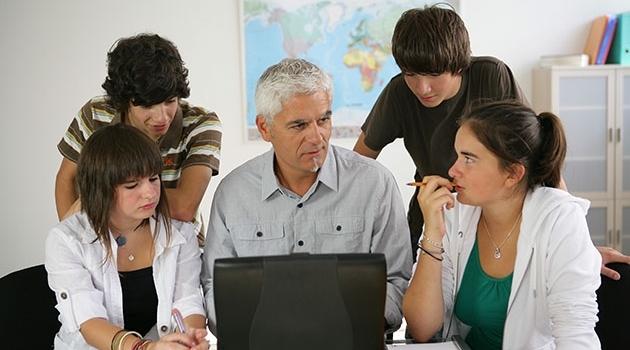Limited transmission of COVID-19 from open schools but teachers were affected
Most countries introduced school closures during the spring of 2020 despite uncertainty regarding the effectiveness in containing SARS-CoV-2. In Sweden, upper secondary schools moved online while lower secondary schools remained open. A comparison of parents with children in the final year of lower secondary and first year of upper secondary school shows that remaining open had limited consequences for the overall transmission of the virus.
However, the infection rate doubled among lower secondary teachers relative to upper secondary ones. The infection rate among partners of lower secondary teachers was 30 per cent higher than among their upper secondary counterparts.
On 18 March 2020, Swedish upper secondary schools moved to online instruction while lower secondary schools remained open. This facilitates a comparison of infections and disease between groups that are comparable in other regards. In the study, all PCR-confirmed cases of SARS-CoV-2 and all healthcare-registered cases of COVID-19 until the summer break are linked to register data on families and teachers in lower and upper secondary schools.
Since the age of the student is likely to correlate with the severity of symptoms, student infectiousness and various types of risk behaviour, it is crucial to compare parents of children close in age. According to the study, the risk of infection was 17 per cent higher among parents whose youngest child studied in the final year of lower secondary rather than the first year of upper secondary school. Had lower secondary schools moved online, the estimates correspond to 500 fewer detected cases among a total of 450,000 lower secondary parents (4.5 per cent of the population). This can be compared to 53,000 PCR-confirmed cases in the total population until the summer break in mid-June.
Economics. Photo: Mikael Wallerstedt
Comparing lower to upper secondary teachers, we find that keeping schools open doubled the risk of both PCR-confirmed infection and healthcare treatment due to COVID-19. Among 124 occupations, upper secondary teachers had a median risk of infection while lower secondary were the 7th most affected. This comparison excludes healthcare workers who had markedly different access to PCR testing. By the end of June, 79 out of 39,500 lower secondary teachers had been hospitalised due to COVID-19, one of whom died. According to the study, this number would have been down to 46 if lower secondary schools had closed.
30 percent higher risk among partners
It is well known that SARS-CoV-2 is transmitted within households. The study finds that the risk of a positive PCR test was 30 per cent higher among partners of lower secondary teachers than among their upper secondary counterparts. The estimates for more serious cases of COVID-19 are somewhat lower than for PCR tests but – just as for parents – these estimates are imprecise.
Closing schools is a costly measure with potentially long-run detrimental effects for students. The results for parents are in line with theoretical models predicting a limited impact of school closures on the general transmission of SARS-CoV-2. In an international comparison, the precautionary measures undertaken in Swedish schools are best described as mild. Thus, strict measures in open schools cannot explain the relatively minor impact on the overall rate of transmission. The results for teachers suggest that further precautionary measures could be considered.
The study does not analyse the impact of school closures on virus transmission among students. We note, however, that there are few cases of serious illness among the young. In particular, zero deaths from COVID-19 had been recorded among 2–19-year-olds in Sweden by mid-summer 2020.
Publication:
Reference: Jonas Vlachos, Edvin Hertegård, Helena B. Svaleryd; The effects of school closures on SARS-CoV-2 among parents and teachers, Proceedings of the National Academy of Sciences Mar 2021, 118 (9) e2020834118; DOI: 10.1073/pnas.2020834118

